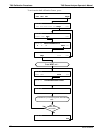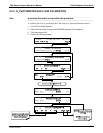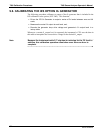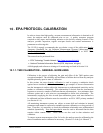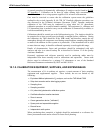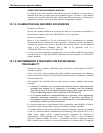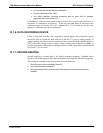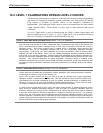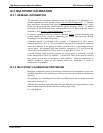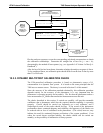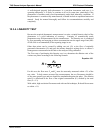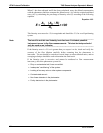
T400 Ozone Analyzer Operator’s Manual EPA Protocol Calibration
207
SPARE PARTS AND EXPENDABLE SUPPLIES
In addition to the basic equipment described in the Q.A. Handbook, it is necessary to
maintain an inventory of spare parts and expendable supplies. Section 11 of this manual
describes the parts that re
quire periodic replacement and the frequency of replacement.
Appendix B contains a list of spare parts and kits of expendables supplies.
10.1.3. CALIBRATION GAS AND ZERO AIR SOURCES
Production of Zero Air
Devices that condition ambient air by drying and removal of pollutants are available on
the commercial market such as the API Model 701 zero air generator.
Production of Span Gas
Because of the instability of O
3
, the certification of O
3
concentrations as Standard
Reference Materials is impractical, if not impossible. Therefore, when O
3
concentration
standards are required, they must be generated and certified locally. We Recommend
using a Gas Dilution Calibrator with a built in O
3
generator, such as a
TAPI Model 700E, as a source for O
3
Span Gas.
In ALL cases, the instrument(s) supplying the zero air and Span calibration gasses used
must themselves be calibrated and that calibration must be traceable to an EPA/NIST
primary standard.
10.1.4. RECOMMENDED STANDARDS FOR ESTABLISHING
TRACEABILITY
Equipment used to produce calibration gasses should be verified against EPA/NIST
traceable standards.
Ozone is the only criteria pollutant for which standard concentrations for calibration
cannot be directly traceable to an NIST-SRM (National Institute of Standards - Standard
Reference Material).
Such standards are classified into two basic groups: primary standards and transfer
standards.
A primary O
3
standard is an O
3
concentration standard that has been dynamically
generated and assayed by UV photometry in accordance with the procedures
prescribed by the U.S. Environmental Protection Agency (EPA) under Title 40 of the
Code of Federal Regulations, Part 50, Appendix D (40 CFR Part 50).
An O
3
transfer standard is a transportable device or apparatus, which, together with
associated operational procedures, is capable of accurately reproducing O
3
concentration standards or producing accurate assays of O
3
concentrations that are
quantitatively related to a primary O
3
standard.
It is worth noting that the requirements for the repeatability and reliability of transfer
standards are more stringent than are those for stationary, primary standards.
A Standard Reference Photometer (SRP) has been developed as a primary O
3
standard
by the U.S. National Institute of Standards and Technology (NIST) and the EPA. It is a
highly stable, highly precise, computer-controlled instrument for assaying O
3
concentrations. NIST maintains one or more “master” SRP’s in lieu of a Standard
Reference Materials (SRM) for ozone. A nationwide network of regionally located
SRP’s enables State and local air monitoring agencies to compare their O
3
standards
06870C DCN6332




